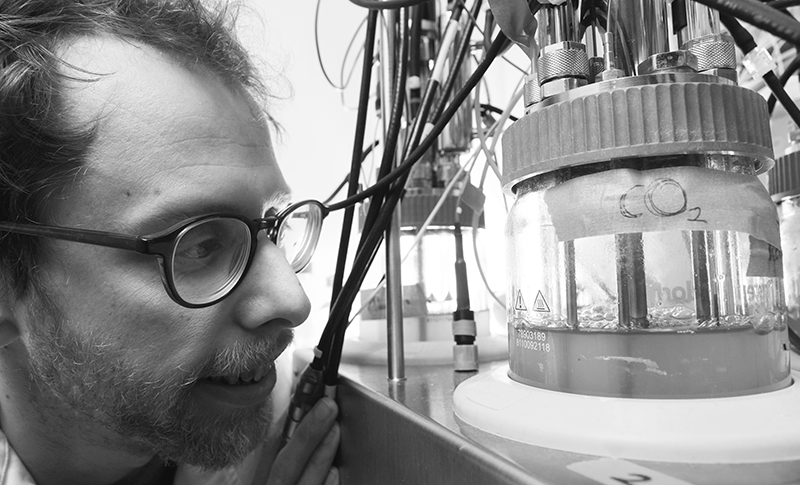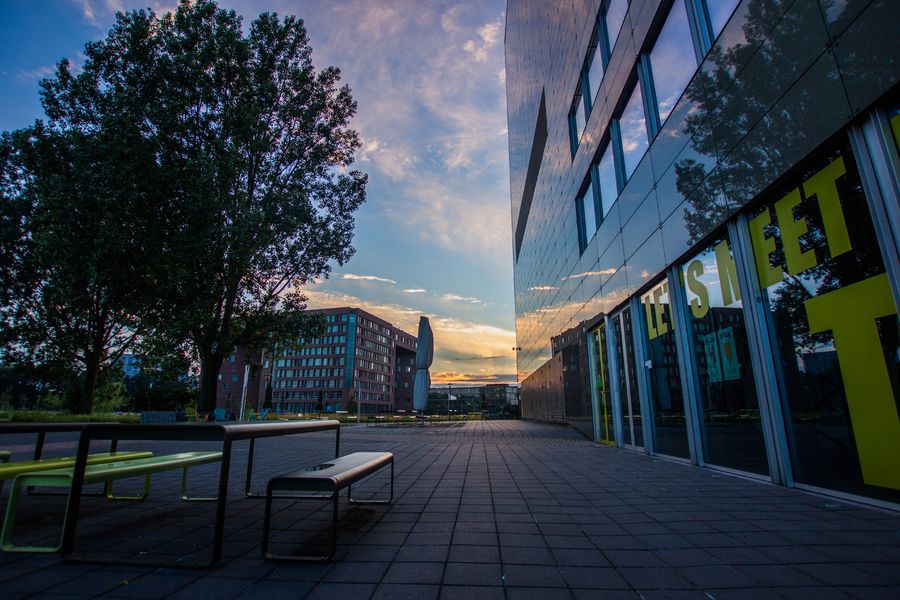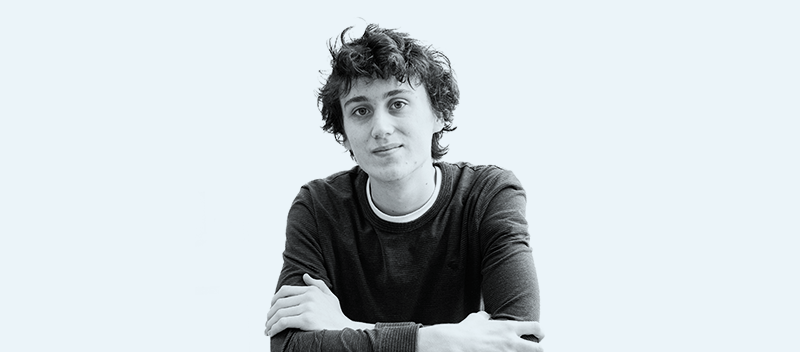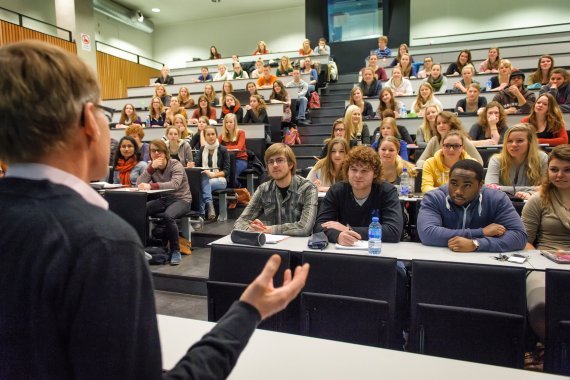Is your hamburger or protein shake going to be made out of CO2 in the future? Yes, if it’s up to microbiologist Nico Claassens. His group is working on developing bacteria that convert CO2 into nutrients such as sugar. ‘The operation is comparable with replacing the heart of a mosquito with that of an elephant.’
The idea of storing carbon dioxide in biomass is not new. About three billion years ago, cyanobacteria (or blue-green algae) were way ahead of us in using the gas as a source of carbon, with the aid of sunlight – and photosynthesis was born. A relative of the cyanobacteria later got into plant cells, where, as chlorophyll, it does the same job. In the volcanic ocean bed, prehistoric bacteria do this as well, not with sunlight but with energy from hydrogen, for example.
What is new here is that assistant professor Nico Claassens (Microbiology) and his group want to attempt to outdo nature. They are building a faster and more efficient substitute for the Calvin cycle, the essential reaction chain for binding CO2. The Calvin cycle converts CO2 into sugars and amino acids, for example. It is the commonest carbon-binding route in bacteria and plants, but it is slow and inefficient. The main enzyme in the cycle, Rubisco, was ‘invented’ when there was hardly any oxygen on Earth. Now the air consists of about 21 per cent oxygen and that causes a problem in the enzyme. It binds not just CO2 but oxygen as well, losing some of the bound CO2 in the process.
Claassens and his colleagues are therefore looking for an alternative. They are making use of existing enzymes, which in theory can form a better cycle between them. ‘In nature, there are about 5000 reactions, enzymes, and we select a couple of them for the new cycle.’
Heart operation
This year, Claassens’ group and Sarah D’Adamo (Bio Process Engineering) started building up a synthetic cycle, starting with the Escherichia coli bacterium. ‘We’ve got the best tools for that bacterium,’ Claassens explains. ‘We’ve got a lot of changes to make.’ The operation is comparable to ‘replacing the heart of a mosquito with the heart of an elephant,’ says Claassens. ‘They are both hearts, but the system around them works in very different ways. E.coli doesn’t even have a Calvin cycle and doesn’t naturally grow on CO2 but has a totally different metabolism. The heart of E.coli is the glycolytic process, which uses sugars as nutrients and converts them through reactions into all the substances the cell needs. Apart from replacing the heart, you’ve got to change all the connection points as well.’
A full CO2 -binding cycle involves 10 to 15 enzymes but the researchers are testing them in stages using ‘modules’ of three to four enzymes at a time. They switch off the enzymes that are native to E.coli and place the module in it to fill the gaps. Then they watch to see whether the bacterium grows. That is what is fascinates Claassens about lab work: ‘The creativity of designing a little slice of life. Building it bit by bit – that is awesome.’ Although the research is based on the idea of outdoing evolution, ironically enough Claassens needs evolution now and then during the process. ‘The module we are inserting is not perfect and might not work well. Sometimes we need the evolution of bacteria in our experiment in order to arrive at efficiently working modules.’ Not all bacteria will manage to survive and grow after the ‘heart transplant’, but a small number of mutants probably will. They multiply and eventually come to dominate. That’s evolution in practice.
Edible CO2
Claassens hopes to have a working synthetic cycle in E.coli in two to three years’ time. There are promising applications for this. You can use carbon dioxide from bacterial biomass to produce green fuel, or proteins and other nutrients. This could even be done independently of agriculture if we feed the bacteria on a chemical energy source such as hydrogen from electricity. In December, Claassens won a grant from the Innovation Fund for the protein transition with the project Microbes4Food, in collaboration with Julia Keppler (Food Process Engineering) and Laurice Pouvreau (Wageningen Food & Biobased Research). Claassens breeds the bacteria, and Keppler and Pouvreau study the characteristics of the proteins from them.
The techniques for upscaling are ready. In the 1970s and 80s, the Soviet Union in particular made use of micro-organisms (yeasts in this case) to produce fish feed from petroleum on a large scale. Whereas the economy was the main driver back then – petroleum was cheap – there is renewed interest now for sustainability reasons, with hydrogen as an energy source. Several companies, such as the Finnish SolarFoods, are already breeding bacteria in large reactors with a view to converting carbon dioxide into food. Claassens is one step ahead of the existing companies in that his group seeks to improve the characteristics of bacteria as food by making extensive genetic adaptations.
But is nature smarter?
Claassens’ work in synthetic biology is pioneering, which means it can also fail. ‘Maybe we’ll find out that our cycle doesn’t work, and that there is more to it than a chain of enzymes. Maybe the Calvin cycle will still work better than our theoretical designs, and we just don’t realize that yet. That could be an outcome of our research.’ But if it does work, Claassens dreams of applications that could contribute to a sustainable world.

 Assistant professor Nico Claassens (Microbiology) with his bioreactor in which bacteria grow on CO2. Photo Guy Ackermans
Assistant professor Nico Claassens (Microbiology) with his bioreactor in which bacteria grow on CO2. Photo Guy Ackermans 

